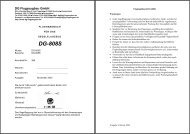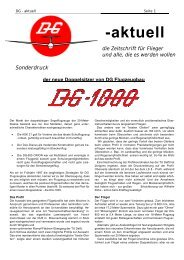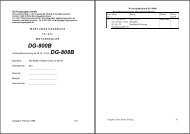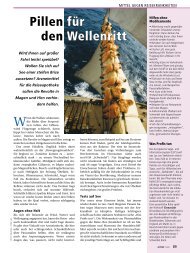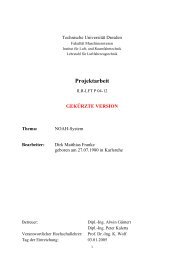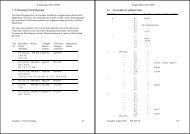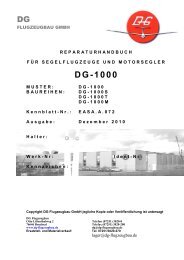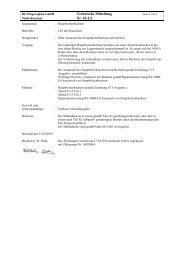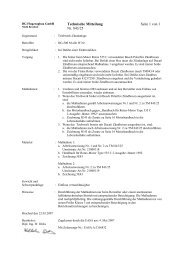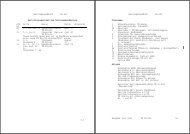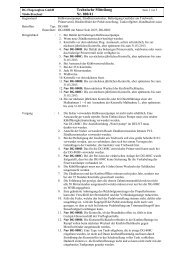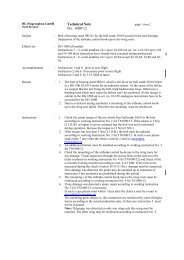DG-1000T - DG Flugzeugbau
DG-1000T - DG Flugzeugbau
DG-1000T - DG Flugzeugbau
Create successful ePaper yourself
Turn your PDF publications into a flip-book with our unique Google optimized e-Paper software.
Flight manual <strong>DG</strong>-<strong>1000T</strong><br />
2.8 Centre of gravity<br />
Centre of gravity range in flight is<br />
200mm (7.87 inch) up to 440mm (17.32 inch) behind datum.<br />
Datum = wing leading edge at the root rib.<br />
Horizontal reference line = aft fuselage centre line horizontal.<br />
C.G. diagrams and loading chart see sect. 6.<br />
2.9 Approved manoeuvres<br />
Category „Utility“:<br />
The glider is certified for normal gliding in the "Utility" category.<br />
Simple aerobatics are approved but only without waterballast and with the<br />
weight of the rear pilot compensated by ballast in the ballast box in the fin see<br />
section 6.8.7.<br />
The following aerobatic manoeuvres are approved with all spans:<br />
Spins Chandelle<br />
Inside loop Turn<br />
Lazy Eight<br />
Recommended entry speeds see section 4.5.11.1.<br />
Category „Aerobatic“<br />
Span 18 m without waterballast, max. mass 630 kg (1389 lbs.) and with the<br />
required equipment see section 2.13 installed and with the weight of the rear<br />
pilot compensated by ballast in the ballast box in the fin see section 6.8.7.<br />
In addition to the manoeuvres in category „Utility“ the following manoeuvres<br />
are approved:<br />
Inverted flight half flick roll from normal to inverted flight with<br />
half loop<br />
half loop and half roll half flick roll from inverted to normal flight<br />
half roll and half loop<br />
slow roll<br />
Recommended entry speeds see section 4.5.11.2.<br />
Issued: July 2005 EASA app. 2.8<br />
Flight manual <strong>DG</strong>-<strong>1000T</strong><br />
2.10 Manoeuvring load factors<br />
The following load factors must not be exceeded:<br />
Category Utility Aerobatic<br />
at manoeuvring speed VA +5,3 -2,65 +7,0 -5,0<br />
at max. speed VNE +4,0 -1,5 +7,0 -5,0<br />
with airbrakes extended VNE +3,5 0 +3,5 0<br />
2.11 Flight crew<br />
a) single seated, only permissible in the front seat<br />
max. load in the front seat 110 kg (242 lbs.)<br />
min. load in the front seat see placard in cockpit<br />
and weighing<br />
report page 6.7<br />
b) two seated<br />
Either the front seat or the rear seat may designated as seat<br />
of the pilot in command.<br />
If the rear seat is to be designated it must be assured that<br />
all necessary operating items and instruments are installed<br />
and that the pilot in command has sufficient training in<br />
flying safely from the rear seat.<br />
max. cockpit load is 210 kg (463 lbs.) with a max. of 105<br />
kg (231 lbs.) in the front seat or 110 kg (242 lbs.) in the<br />
front seat and 90 kg (198 lbs.) in the rear seat.<br />
min. cockpit load in the front seat is the min. cockpit load<br />
see a) minus 40% of the load in the rear seat. This means<br />
that 10 kg (22 lbs.) in the rear seat replaces 4 kg (8.8 lbs.)<br />
missing cockpit load in the front seat.<br />
With these loads, the C.G. range given under 6.8 will be kept in the limits if the<br />
empty weight C.G. is in its limits. See loading chart in sect. 6.8.<br />
Caution:<br />
With lower pilot weights lead ballast must be added to the seat.<br />
Ballast put on the seat (lead ballast cushion) must be fastened at the safety belt<br />
anchor point.<br />
Option: Provision for removable trim-ballast in the front cockpit see sect 7.17.1.<br />
Note: For Australia the lower limit for the min. load in the cockpit should not<br />
exceed 66 kg (146 lbs.). A provision for removable ballast see sect. 7.17.1 is<br />
mandatory.<br />
Issued: July 2005 EASA app. 2.9




